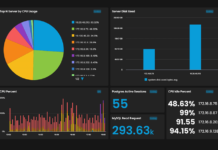When performing Salesforce to SQL Server integration, it’s fundamental to address security and compliance considerations associated with it. This is necessary to ensure sensitive data protection and regulatory requirements adherence.
This article contains key security and compliance issues associated with the SQL Server Salesforce integration. It explains how to check whether there are any issues within the data flow from one service to another. Also, this article also provides tips on how to eliminate those issues and hinder intruders from stealing valuable data during its journey between two systems.
Data Security Challenges Associated with Data Transfer between SQL Server and Salesforce
Sending data from SQL Server to Salesforce (or vice versa) is often associated with security challenges. Here are some of the most significant ones:
- Data encryption. Such protocols as SSL/TLS make up a secure gateway for data transfer. They play a crucial role in preventing interception by unauthorized parties when data is sent from Salesforce to SQL Server or vice versa.
- Authentication and authorization. Implementing role-based access (RBAC) management mechanisms is essential for user identity verification. They also ensure that only authorized individuals have access to data.
- Secure data storage. Safeguarding data stored in SQL Server and Salesforce databases is possible by adopting the encryption-at-rest mechanisms.
- Data leakage prevention. The data loss prevention (DLP) measures help to monitor data flows, detect sensitive data patterns, and prevent unauthorized data exfiltration.
- Logging and monitoring. These activities help to track data transfer, access attempts, and security incidents. Such mechanisms are also efficient in detecting suspicious behavior, unauthorized access, and data breaches.
- Regulatory compliance. Such data protection regulations as GDPR, CCPA, HIPAA, etc., need to be adhered to when transferring data between SQL Server and Salesforce. It’s also necessary to understand and determine which regulatory requirements are applicable to your organization’s data.
- Employee training and awareness. Educate the involved team members about data security best practices, privacy policies, and regulatory requirements. This is essential to mitigate the risk of insider threats and human errors that could compromise the security of data transferred between SQL Server and Salesforce.
The above-mentioned challenges need to be addressed in a timely manner to grant confidentiality, integrity, and availability of sensitive information though the implementation of appropriate security controls and measures. Organizations can ensure the secure transfer of data between SQL Server and Salesforce while mitigating risks and protecting sensitive information from unauthorized access, disclosure, or tampering.
Compliance with Regulatory Requirements
As practically in any data integration flow, the one between Salesforce and SQL Server needs to comply with modern data protection standards and regulatory requirements. Below, find the most important regulatory requirements relevant in the web space along with the actions required from organizations.
General Data Protection Regulation (GDPR)
This regulatory standard requires obtaining explicit consent from individuals before transferring their personal data between SQL Server and Salesforce. It also asks companies to ensure that only necessary data is transferred over integration channels. Moreover, the personal data should be encrypted before transfer and then should be kept in the encrypted format during storage for the sake of confidentiality.
GDPR requirements for data transfer need to be respected even outside the European Economic Area (EEA). It’s possible by implementing the appropriate safeguards such as Standard Contractual Clauses (SCCs).
California Consumer Privacy Act (CCPA)
According to this standard, consumers need to have a clear idea about data collection and sharing practices between SQL Server and Salesforce. Also, companies need to ensure access to personal information upon request with the possibility to delete it. Companies also need to adopt all the necessary security measures and protocols in order to protect customers’ personal data and sensitive information from unauthorized access or disclosure.
Health Insurance Portability and Accountability Act (HIPAA)
From the standard’s name, it’s already clear that it applies to the health insurance industry and companies that deal with health insurance in some way. The personal data provided in health insurance is also known as protected health information (PHI). When transferred between SQL Server and Salesforce, it must be encrypted.
Payment Card Industry Data Security Standard (PCI DSS)
It’s now possible to buy almost everything online or make a money transfer as a payment for some service. Undoubtedly, the payment card data transferred on the web needs to be securely protected in order to avoid data leakages and credit card information stolen. This applies also when transferring payment card data between SQL Server and Salesforce.
Reviewing and updating your compliance practices regularly is necessary to align them with changes in regulatory requirements and industry standards. This includes periodic assessments and audits to identify any compliance gaps and take corrective actions if needed. By prioritizing compliance with regulatory requirements, you can ensure the secure and lawful integration of SQL Server with Salesforce while protecting sensitive data and maintaining trust with customers and stakeholders.
The Role of Secure Transmission Protocols in Salesforce Integration with SQL Server
Secure transmission protocols are essential for ensuring data confidentiality, and integrity during its transfer between Salesforce and SQL Server. Such protocols as SSL/TLS encrypt data in transit, which helps to prevent unauthorized access to sensitive information.
Additionally, secure transmission protocols protect against replay attacks by implementing timestamping and nonce mechanisms, ensuring the freshness of data exchanges. By the way, compliance requirements, including GDPR and HIPAA, mandate the use of secure transmission protocols to protect sensitive data and uphold privacy standards.
Mutual authentication between Salesforce and SQL Server verifies the identities of both parties, mitigating the risk of unauthorized access and man-in-the-middle attacks. Overall, adherence to secure transmission protocols is a fundamental best practice in cybersecurity, reducing the risk of data breaches and unauthorized access while maintaining trust with customers and regulatory compliance.
Employee Training and Awareness
Designing and conducting training about security measures for employees might be the most obvious but obfuscated thing at the same time. Anyway, such sessions are obligatory in any organization dealing with SQL Server and Salesforce integration.
There needs to be general employee training for all team members involved in working with SQL Server and Salesforce systems. They need to be aware of the basic security measures and regulatory compliance requirements.
Dedicated in-depth training sessions needs to be conducted for technical experts who perform the Salesforce SQL Server integration. They needs to be aware of possible attacks that may result in data leakage during the transfer and know how to prevent them.
Conclusion
Integrating Salesforce with SQL Server helps companies to streamline processes, enhance data management, and drive business growth. However, it’s very important to think of security before implementing the integration. That way businesses can seamlessly exchange data between these platforms while ensuring data security, compliance with regulatory standards, and optimal performance.















